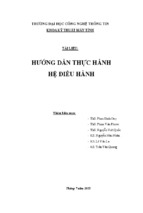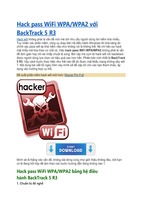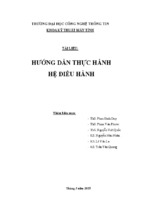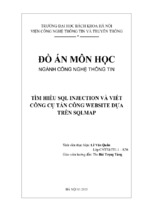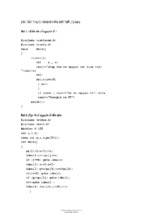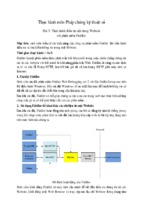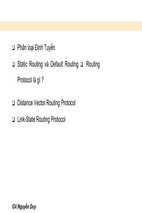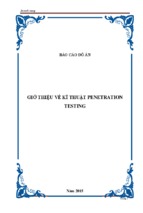Chapter 8
Electronic Payment Systems
and Security
© Prentice Hall, 2000
1
Learning Objectives
❚ Describe typical electronic payment systems for EC
❚ Identify the security requirements for safe electronic
payments
❚ Describe the typical security schemes used to meet
the security requirements
❚ Identify the players and procedures of the electronic
credit card system on the Internet
❚ Discuss the relationship between SSL and SET
protocols
© Prentice Hall, 2000
2
Learning Objectives (cont.)
❚ Discuss the relationship between electronic fund
transfer and debit card
❚ Describe the characteristics of a stored value
card
❚ Classify and describe the types of IC cards used
for payments
❚ Discuss the characteristics of electronic check
systems
© Prentice Hall, 2000
3
SSL Vs. SET: Who Will Win?
❚ A part of SSL (Secure Socket Layer) is available
on customers’ browsers
❙ it is basically an encryption mechanism for order taking,
queries and other applications
❙ it does not protect against all security hazards
❙ it is mature, simple, and widely use
❚ SET ( Secure Electronic Transaction) is a very
comprehensive security protocol
❙ it provides for privacy, authenticity, integrity, and, or
repudiation
❙ it is used very infrequently due to its complexity and the
need for a special card reader by the user
❙ it may be abandoned if it is not simplified/improved
© Prentice Hall, 2000
4
Payments, Protocols and Related Issues
❚ SET Protocol is for Credit Card Payments
❚ Electronic Cash and Micropayments
❚ Electronic Fund Transfer on the Internet
❚ Stored Value Cards and Electronic Cash
❚ Electronic Check Systems
© Prentice Hall, 2000
5
Payments, Protocols and Related Issues (cont.)
❚ Security requirements
❙ Authentication: A way to verify the buyer’s identity
before payments are made
❙ Integrity: Ensuring that information will not be
accidentally or maliciously altered or destroyed,
usually during transmission
❙ Encryption: A process of making messages
indecipherable except by those who have an
authorized decryption key
❙ Non-repudiation: Merchants need protection
against the customer’s unjustifiable denial of placed
orders, and customers need protection against the
merchants’ unjustifiable denial of past payment
© Prentice Hall, 2000
6
Security Schemes
❚ Secret Key Cryptography (symmetric)
Keysender (= Keyreceiver)
Original
Message
Sender
Scrambled
Message
Internet
Keyreceiver
Scrambled
Message
Original
Message
Decryption Receiver
Encryption
© Prentice Hall, 2000
7
Security Schemes (cont.)
❚ Public Key Cryptography
Public Keyreceiver
Message
Original
Message
Scrambled
Message
Private Keyreceiver
Internet
Scrambled
Message
Sender
Receiver
Private Keysender
Digital
Original
Signature Message
Original
Message
Scrambled
Message
Public Keysender
Internet
Sender
Scrambled
Message
Original
Message
Receiver
© Prentice Hall, 2000
8
Security Schemes (cont.)
❚ Digital Signature
❙ Analogous to handwritten signature
Sender encrypts
a message with
her private key
A digital signature is
attached by a sender
to a message
encrypted in the
receiver’s public key
Any receiver with
senders public key
can read it
The receiver is the only
one that can read the
message and at the same
time he is assured that
the message was indeed
sent by the sender
© Prentice Hall, 2000
9
Security Schemes (cont.)
❚ Certificate
❙ Identifying the holder of a public key (KeyExchange)
❙ Issued by a trusted certificate authority (CA)
Name : “Richard”
key-Exchange Key :
Signature Key :
Serial # : 29483756
Other Data : 10236283025273
Expires : 6/18/96
Signed : CA’s Signature
© Prentice Hall, 2000
10
Security Schemes (cont.)
❚ Certificate Authority - e.g. VeriSign
❙
❙
❙
❙
Public or private, comes in levels (hierarchy)
A trusted third party services
Issuer of digital certificates
Verifying that a public key indeed belongs to a
certain individual
RCA
BCA
GCA
CCA
RCA : Root Certificate Authority
BCA : Brand Certificate Authority
GCA : Geo-political Certificate Authority
CCA : Cardholder Certificate Authority
MCA : Merchant Certificate Authority
PCA : Payment Gateway
Certificate Authority
MCA
PCA
Hierarchy of Certificate Authorities
Certificate authority needs to be verified by a government or well trusted entity ( e.g., post office)
© Prentice Hall, 2000
11
Electronic Credit Card System
on the Internet
❚ The Players
❙ Cardholder
❙ Merchant (seller)
❙ Issuer (your bank)
❙ Acquirer (merchant’s financial institution,
acquires the sales slips)
❙ Brand (VISA, Master Card)
© Prentice Hall, 2000
12
Electronic Credit Card System
on the Internet (cont.)
❚ The process of using credit cards offline
A cardholder requests the issuance of a
card brand (like Visa and MasterCard)
to an issuer bank in which the
cardholder may have an account.
A plastic card is physically delivered
to the customer’s address by mail.
The cardholder shows the card to a
merchant to pay a requested
amount. Then the merchant asks
for approval from the brand
company.
The acquirer bank requests the
issuer bank to pay for the credit
amount.
The authorization of card issuance
by the issuer bank, or its designated
brand company, may require
customer’s physical visit to an office.
The card can be in effect as the
cardholder calls the bank for
initiation and signs on the back of
the card.
Upon the approval, the merchant
requests payment to the merchant’s
acquirer bank, and pays fee for the
service. This process is called a
“capturing process”
© Prentice Hall, 2000
13
Cardholder
credit
card
Merchant
Payment authorization,
payment data
Card Brand Company
payment data
account debit data
payment data
amount transfer
Issuer Bank
Acquirer Bank
Cardholder
Account
Merchant
Account
Credit Card Procedure (offline and online)
© Prentice Hall, 2000
14
Secure Electronic Transaction (SET)
Protocol
❚ Sender’s Computer
1. The message is hashed to a prefixed length of message digest.
2. The message digest is encrypted with the sender’s private
signature key, and a digital signature is created.
3. The composition of message, digital signature, and Sender’s
certificate is encrypted with the symmetric key which is
generated at sender’s computer for every transaction. The result
is an encrypted message. SET protocol uses the DES algorithm
instead of RSA for encryption because DES can be executed
much faster than RSA.
4. The Symmetric key itself is encrypted with the receiver’s public
key which was sent to the sender in advance. The result is a
digital envelope.
© Prentice Hall, 2000
15
Sender’s Computer
Message
Sender’s Private
Signature Key
Message Digest
Digital Signature
+
Message
+
+
Symmetric
Key
Encrypt
Sender’s
Certificate
Receiver’s
Certificate
Encrypted
Message
Encrypt
Receiver’s
Key-Exchange Key
© Prentice Hall, 2000
Digital
Envelope
16
Secure Electronic Transaction (SET)
Protocol (cont.)
❚ Receiver’s Computer
5. The encrypted message and digital envelope are transmitted to
receiver’s computer via the Internet.
6. The digital envelope is decrypted with receiver’s private exchange
key.
7. Using the restored symmetric key, the encrypted message can be
restored to the message, digital signature, and sender’s certificate.
8. To confirm the integrity, the digital signature is decrypted by
sender’s public key, obtaining the message digest.
9. The delivered message is hashed to generate message digest.
10. The message digests obtained by steps 8 and 9 respectively, are
compared by the receiver to confirm whether there was any
change during the transmission. This step confirms the integrity.
© Prentice Hall, 2000
17
Receiver’s Computer
Receiver’s Private
Key-Exchange Key
Decrypt
Digital
Envelope
Message
Decrypt
Symmetric
Key
Encrypted
Message
+
+
Sender’s
Certificate
Message Digest
compare
Decrypt
Digital Signature
Sender’s Public
Signature Key
© Prentice Hall, 2000
Message Digest
18
IC Card
Reader
Customer y
Customer x
With Digital Wallets
Certificate
Authority
Electronic Shopping Mall
Merchant A
Merchant B
Payment Gateway
Protocol
X.25
Credit Card
Brand
Entities of SET Protocol in Cyber Shopping
© Prentice Hall, 2000
19
SET Vs. SSL
Secure Electronic Transaction (SET)
Secure Socket Layer (SSL)
Complex
Simple
SET is tailored to the credit card
payment to the merchants.
SSL is a protocol for generalpurpose secure message
exchanges (encryption).
SSL protocol may use a
certificate, but there is no
payment gateway. So, the
merchants need to receive both
the ordering information and
credit card information, because
the capturing process should be
initiated by the merchants.
SET protocol hides the customer’s
credit card information from
merchants, and also hides the
order information to banks, to
protect privacy. This scheme is
called dual signature.
© Prentice Hall, 2000
20
- Xem thêm -


